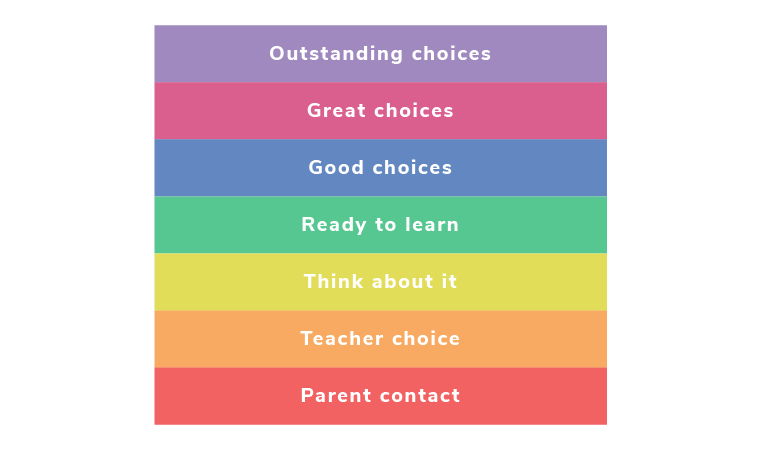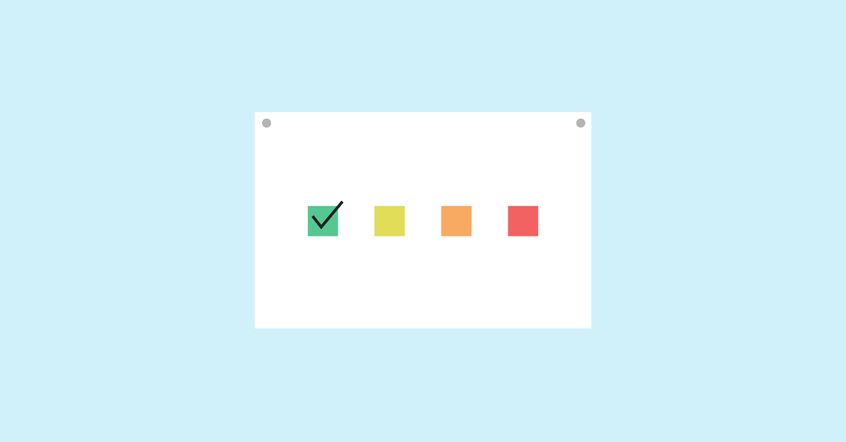A positive look at learner behaviour charts
How do you help learners follow the rules of the classroom — without stigmatising children who misbehave? Here are some tips for using a behaviour chart as a positive tool in your classroom.
Good behaviour is essential in the classroom and you work hard to establish rules, routines, and expected behaviour. The particular wording in every classroom may change, but most expectations will be broadly similar: listen to whoever is speaking, put your hand up, and use an ‘indoor voice’.
When children stick to classroom rules, it makes it easier for everyone to learn efficiently, safely, and happily. One way to help children follow these rules is to use a behaviour chart.
How do behaviour charts work?
A behaviour chart in its simplest form is a colour coded scale that tracks the ups and downs of behaviour in the classroom. A simple version is a red-yellow-green scale, but you could add more colours and descriptions to suit your learners.

You begin by asking each child to write their names on the middle colour. If they behave well during lessons, their name moves up to the next colour. If their behaviour is inappropriate, their name moves down.
Children are rewarded when their name goes up (I give my learners stickers, house points) and there are consequences when their name goes down (I send them to another classroom, or in some cases, have a chat with their parents).
I’ve found this system to be effective for any age group, from Reception to KS2. When children have a visual reminder of the rewards and consequences relating to their behaviour, they’re more likely to aim for good behaviour.
It also reminds me to give out specific praise to children for effort, helping me keep track of any children who are displaying low-level disruptive behaviour frequently or note any changes in a child’s behaviour.
How to acknowledge poor behaviour (without stigmatising children)
Although they’re little, children still have big feelings. It’s our job as teachers to nurture and support as opposed to adding to their already complex emotions. We don’t want to shame children or make them feel embarrassed, admonished, or lower their self-esteem in what should be a safe learning environment.
Other behaviour management ideas include a ‘reflection area’ in the classroom or having your behaviour chart on a clipboard and verbally letting a child know they have been moved down.
When looking at other strategies, I can’t help but notice they involve children being told that their behaviour is unacceptable. They still make other children aware of the situation, and could lead to feelings of shame or low self-esteem. This made me take a step back and consider that the way a behaviour system is used may be more important than the system itself.
How to use a behaviour chart as a positive tool
I reflected on my own practice and tried to pinpoint actions I had taken to make sure my learners see a behaviour chart as a positive tool in the classroom. Here’s what I came up with:
Explain why we have a behaviour chart
The link between good behaviour and effective learning isn’t as obvious to children as it may be to adults. Introducing the concept and explaining the reasons behind the behaviour chart meant that my class understood why it was there, and how it could help them.
Give children the chance to redeem themselves
I made the consequences for moving up and down a colour clear and explained that if they reached yellow, they could be moved back up to green by displaying good behaviour. The idea of redemption is very important!
I made an effort to spot children on yellow and find something I could give specific praise for — usually they were back up to green within ten minutes.
Make sure that the children agree on the rules
The actions which lead to names going up and down are agreed, typed, printed, and signed by every adult and child in the room to ensure consistency and clarity. A child has two very clear warnings before their name moved down on the behaviour chart.
Speak to children privately
When a child does need to be moved down, I call them over to speak to me privately and to make sure they don’t feel ashamed in front of their peers. On one occasion, I noticed another child commenting on who was on yellow, so we spoke about how that might make the other child feel and I reminded them that the chart was there to help.
At the end of the day, recap and reset
At the end of the day, any lower names should be put back to the starting position. Give the children who have their names moved up house points, stickers, and praise after you’ve discussed what they’ve done.
These tips have been essential in making my class feel comfortable and happy with the behaviour chart in my classroom. I think that whatever system you use, it must be used consistently. The children have to fully understand how it works, what it is for, and why it’s needed in the classroom.
